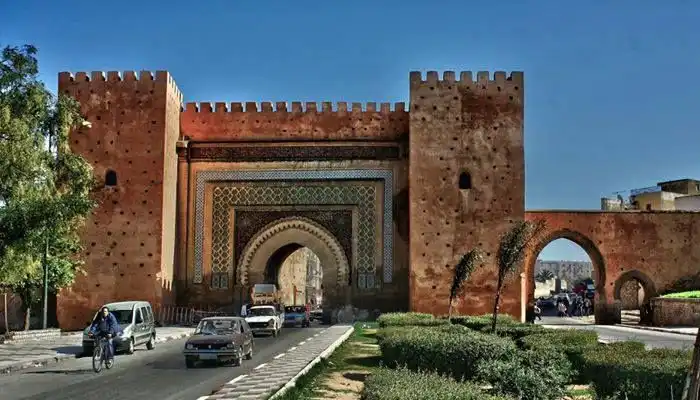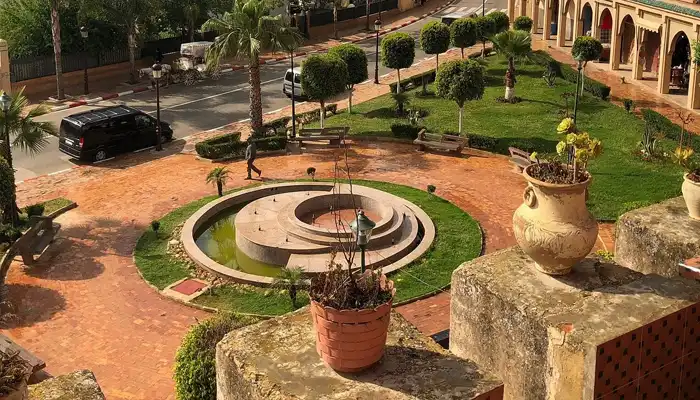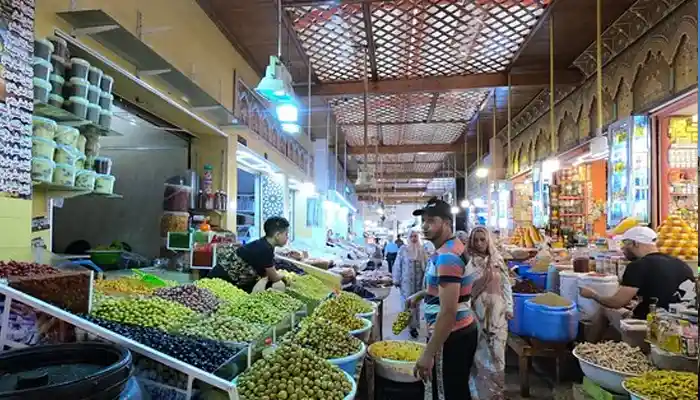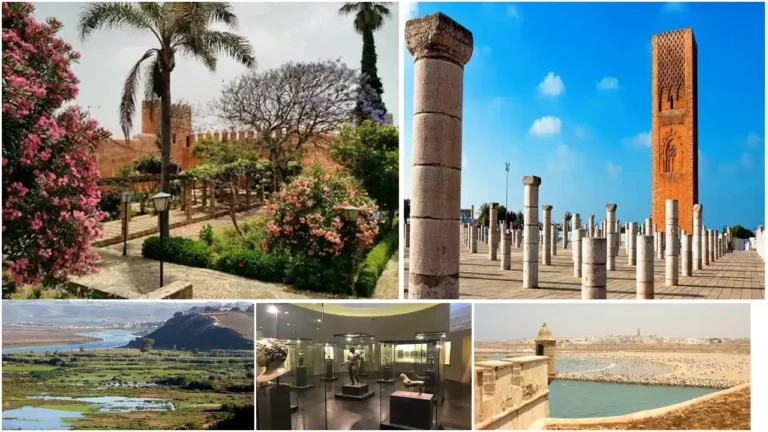Exploring the Historic Medina of Meknes: A Journey Through Morocco’s Imperial Heart
Introduction
The Historic Medina of Meknes, a UNESCO World Heritage site, stands as a vibrant testament to Morocco’s imperial history and rich cultural heritage. Nestled at the heart of Meknes, this ancient medina invites visitors to step back in time and experience a harmonious blend of tradition, daily life, and architectural splendor.
Once the focal point of Sultan Moulay Ismail’s vision for Meknes as a grand imperial city, the medina is a labyrinth of narrow streets, bustling souks, and timeless structures. It offers an authentic glimpse into the past, where the echoes of history coexist with the rhythm of modern life. As visitors wander through its winding alleys, they uncover a treasure trove of historical landmarks, artisan crafts, and vibrant marketplaces.

This guide delves into the essence of the Meknes medina, covering its layout, historical significance, and the lively souks that form its beating heart. Whether you’re an avid history enthusiast or a curious traveler, the medina promises an unforgettable journey through one of Morocco’s most iconic destinations.
Table of Contents
The Layout and History of the Medina
Historical Background
The medina of Meknes, established during the reign of Sultan Moulay Ismail in the 17th century, was central to his vision of transforming Meknes into an imperial capital. As a bustling hub of trade, governance, and culture, the medina symbolized the city’s power and prominence. Its intricate layout, fortified walls, and majestic gates reflect the strategic and artistic ambitions of the era.

The medina’s historical significance is underscored by its role in shaping Meknes as a cultural and economic center. From its grand gates to its hidden courtyards, every corner of the medina tells the story of a city that once stood at the pinnacle of Morocco’s imperial legacy.
Architectural Highlights
Walking through the medina, visitors encounter towering walls and ornate gates such as the iconic Bab Mansour, celebrated for its detailed tilework and inscriptions. The labyrinthine streets lead to traditional riads—Moroccan homes designed around tranquil courtyards—that now serve as guesthouses or cultural landmarks. These architectural elements showcase the seamless blend of functionality and artistry that defines the medina’s design.

The medina’s structure not only provided practical urban planning for daily life but also reflected the grandeur of Sultan Moulay Ismail’s vision. Today, it stands as both a historical treasure and a living museum, offering visitors an immersive experience of Morocco’s imperial past.
Navigating the Medina: Key Points of Interest
Central Landmarks
Navigating the Meknes medina can be an adventure, with its maze of narrow alleyways, bustling squares, and hidden corners. At its heart lies the vibrant Place El Hedim, an open square where locals and tourists converge to experience the lively atmosphere. Nearby, the Bab Mansour gate serves as a striking entrance to the medina, embodying the architectural elegance of Sultan Moulay Ismail’s era.
For those exploring further, landmarks like Bab el-Khemis, another historic gateway, and the medina’s traditional neighborhoods reveal the depth of its cultural and historical fabric.
Helpful Tips
While the medina’s labyrinthine streets can be overwhelming for first-time visitors, a sense of curiosity and adventure makes exploration all the more rewarding. A basic map or navigation app can help locate major landmarks and gates. However, embracing the charm of getting lost often leads to discovering hidden gems like artisan workshops and peaceful courtyards.
Visitors are encouraged to engage with friendly locals, many of whom are happy to provide directions or share insights into the medina’s history. With patience and an open mind, navigating the medina becomes an exciting journey through time.

The Soul of the Medina: The Meknes Souks
The souks of Meknes are the heartbeat of the medina, offering a sensory feast that captures the essence of Moroccan culture. As you stroll through these bustling markets, you’re greeted by an array of vibrant sights, sounds, and scents—stalls overflowing with colorful spices, intricately woven textiles, handcrafted pottery, and traditional leather goods. The souks are not merely marketplaces; they are cultural hubs where history and commerce intertwine.

Sensory Experience
Each section of the souks tells a unique story. The spice market, for instance, is a kaleidoscope of colors and aromas, with cumin, saffron, and paprika perfuming the air. Nearby, leather artisans craft goods by hand, continuing traditions that have been passed down through generations. These markets provide a dynamic glimpse into daily life in Meknes, where locals and tourists alike gather to shop, socialize, and connect.
Unique Market Areas
What sets the Meknes souks apart is their blend of old-world charm and modern energy. From centuries-old trading practices to contemporary interpretations of Moroccan craftsmanship, the markets are a living reflection of the medina’s vibrant culture. Bargaining is an essential part of the experience, turning each transaction into a lively exchange that adds to the atmosphere.
For those seeking a deeper dive into the medina’s market life, the dedicated article “A Stroll Through Meknes’ Bustling Souks“ offers tips on what to buy, how to bargain, and the best times to visit.
Historical Sites within the Medina
The medina of Meknes is not just a bustling marketplace but also a treasure trove of historical landmarks that reflect its rich imperial past. Visitors wandering through its vibrant streets encounter a remarkable tapestry of sites that showcase the medina’s architectural and cultural heritage.

Religious and Educational Heritage
Among the most notable landmarks is the Grand Mosque, a serene symbol of spiritual life in Meknes. With its intricately decorated minaret and tranquil courtyard, the mosque serves as a reminder of the city’s deep religious devotion and the role of Islam in shaping Moroccan culture.
Equally significant are the madrasas—ancient Islamic schools that were once centers of intellectual life in Meknes. The Bou Inania Madrasa stands out for its stunning craftsmanship, featuring elaborate zellige tilework and finely carved wooden details. These institutions not only educated Morocco’s scholars but also contributed to the city’s legacy as an intellectual hub.
Preserved Riads
Throughout the medina, visitors will find beautifully preserved riads—traditional Moroccan homes centered around lush interior courtyards. Many of these riads have been converted into guesthouses, cafes, or cultural spaces, offering a glimpse into the domestic life of Meknes’ past while providing tranquil retreats from the medina’s lively streets.

Highlights of Imperial History
Each historical site within the medina tells a story of Meknes’ evolution from an imperial capital to a modern city with deep roots in its past. These landmarks serve as windows into the era of Sultan Moulay Ismail, whose grand vision transformed Meknes into a city of unparalleled cultural and architectural importance.
The Unique Architecture of the Medina
The architecture of the Meknes medina is a masterpiece of Moroccan design, blending influences from Andalusian, Arab, and Berber traditions. Each element, from monumental gates to hidden courtyards, reflects centuries of craftsmanship and artistry.
Timeless Design
One of the defining features of the medina’s architecture is the riad. These traditional homes are built around interior courtyards, designed to offer privacy and serenity. Visitors walking through the medina are greeted by intricate zellige tilework, carved wooden doors, and arched entrances that exemplify Moroccan architectural elegance. Despite the passage of time, these designs remain remarkably unchanged, preserving the medina’s timeless character.
Gates and Walls
The medina’s fortifications are among its most striking architectural features. The Bab Mansour, one of Morocco’s most famous gates, stands as a testament to the grandeur of Sultan Moulay Ismail’s vision. Its intricate tile patterns, Quranic inscriptions, and imposing size reflect both the defensive needs and artistic aspirations of the era.

The medina’s walls, dotted with other gates like Bab el-Khemis, served as protective barriers during the city’s imperial height. These fortifications not only safeguarded Meknes but also symbolized its strength and importance as a capital city.
Cultural Significance
The architecture of the medina goes beyond aesthetics—it embodies the cultural identity of Meknes. From the vibrant mosaics and towering minarets to the shaded courtyards, every detail offers a glimpse into the city’s historical and artistic legacy.
Daily Life in the Medina: Culture and Tradition
The medina of Meknes is more than a historical site—it is the vibrant heart of daily life for its residents. A walk through its narrow streets reveals a bustling community where tradition and modernity coexist in harmony.

Everyday Activities
Life in the medina revolves around its bustling souks, where vendors sell everything from fresh produce to handmade crafts. The streets are alive with the sounds of haggling, the aromas of freshly baked bread, and the colorful displays of goods. Beyond commerce, the medina is a social hub, where neighbors gather, children play, and the rhythm of life flows with the calls to prayer from nearby mosques.
Festivals and Celebrations
The medina is a focal point for many of Meknes’ cultural and religious celebrations. During festivals, the streets come alive with music, processions, and gatherings that highlight the city’s rich traditions. Events like the Moulay Idriss Zerhoun pilgrimage or local celebrations tied to Islamic holidays offer visitors a chance to experience the medina’s vibrant culture firsthand.
Local Interactions
Visitors to the medina are often struck by the warmth and hospitality of its residents. Shopkeepers greet guests with a friendly “salaam alaikum” (peace be upon you) and are often eager to share stories about their wares or the history of the medina. Accepting an invitation for mint tea in a shop or chatting with an artisan at work provides deeper insights into the daily lives of those who call the medina home.
Exploring the Hidden Gems of the Medina
Beyond its iconic landmarks and bustling souks, the Meknes medina harbors a wealth of hidden treasures waiting to be discovered by the curious traveler. These lesser-known corners offer a more intimate glimpse into the medina’s charm and cultural richness.
Off-the-Beaten-Path Discoveries
As you venture away from the main streets, you’ll stumble upon quaint artisan workshops tucked into narrow alleyways. Here, skilled craftsmen create intricate pottery, leather goods, and textiles using techniques passed down through generations. Visiting these workshops provides a unique opportunity to observe traditional Moroccan craftsmanship up close and perhaps take home a one-of-a-kind souvenir.
In addition to artisan spaces, quiet courtyards and tucked-away riads offer peaceful escapes from the medina’s lively streets. Many of these serene spots are home to small cafes or tea houses, where you can savor a glass of refreshing mint tea while soaking in the tranquil ambiance.
The Charm of Unplanned Adventures
Exploring the hidden gems of the medina is best done without a strict itinerary. Let your instincts guide you through the winding alleys, and you’ll likely discover unique sights that aren’t featured in guidebooks. Whether it’s a beautifully adorned doorway, a secluded mosque, or a friendly shopkeeper with stories to share, these unplanned moments often become the most memorable part of your visit.
By embracing the medina’s labyrinthine nature and stepping off the beaten path, visitors unlock a deeper connection to Meknes, discovering the small yet significant details that make this historic city truly special.
Practical Tips for Visiting the Medina
To ensure a rewarding experience in the historic medina of Meknes, it’s essential to be well-prepared. These practical tips will help you navigate the medina with ease and make the most of your visit.
What to Wear
- Opt for comfortable walking shoes to handle the medina’s cobblestone streets and narrow alleyways.
- Dress modestly out of respect for local customs, with loose-fitting clothing that covers your shoulders and knees.
Best Times to Visit
- Mornings provide a quieter atmosphere, ideal for exploring the medina’s landmarks and hidden gems.
- For a livelier experience, visit in the late afternoon or early evening when the souks are bustling with activity.
- Keep in mind that many shops and souks close during lunchtime and on Fridays for prayer.
Navigational Advice
- Carry a simple map or use a navigation app to orient yourself, but don’t shy away from getting lost—it’s part of the medina’s charm.
- Major landmarks like Bab Mansour can serve as helpful reference points.
Bargaining Tips
- Bargaining is customary in the souks. Start by offering about half of the asking price and negotiate with a friendly and respectful attitude.
- Enjoy the process, as it’s an integral part of the Moroccan shopping experience.
Interacting with Locals
- A warm “salaam alaikum” (peace be upon you) goes a long way when greeting shopkeepers and artisans.
- If invited for tea, accept it as a gesture of hospitality, though there’s no obligation to make a purchase.
Staying Safe
- While Meknes is generally safe, remain mindful of your belongings, especially in crowded areas.
- Avoid carrying large amounts of cash or valuables.
Sustainable Tourism
- Support local businesses by buying from small vendors and artisans.
- Respect cultural norms and avoid disruptive behaviors to help preserve the medina’s authenticity.
By keeping these tips in mind, visitors can enjoy a seamless and enriching journey through the medina, from its bustling markets to its serene hidden corners.
Conclusion
The Historic Medina of Meknes encapsulates the essence of Morocco’s imperial heritage and vibrant culture. A UNESCO World Heritage site, the medina is a living testament to the vision of Sultan Moulay Ismail and the enduring traditions of the city. From its stunning architecture and bustling souks to its hidden gems and warm hospitality, the medina offers an immersive experience that blends history with modern-day life.
For those seeking a deeper connection with Morocco, the medina is an unmissable destination that reveals the soul of Meknes. Each narrow alley, majestic gate, and artisan workshop tells a story of the city’s past, making every visit a journey of discovery and wonder.
As you plan your trip, consider exploring more about Meknes’ broader attractions by checking out our guide Top Attractions in Meknes: A Comprehensive Guide. Embark on an unforgettable adventure through the medina and create memories that will stay with you for years to come.






